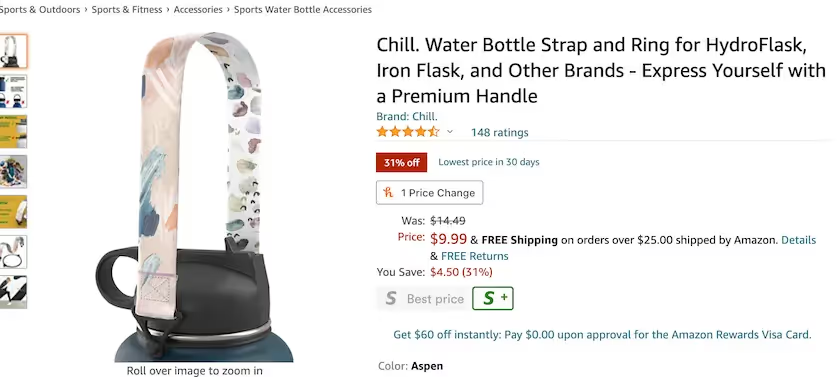How to Use Ecommerce Data to Innovate on Product Development
Ecommerce provides essential data about consumers. Here's how you can use ecommerce data to innovate on product development to create better products, quicker.
Data analytics is the secret sauce powering almost every successful industry in the world. Everything from what you see on social media to the headlines you click on to the fact that you’re here reading this blog is determined and shaped by data, and data has become an especially important tool in ecommerce.
Ecommerce data helps your brand determine everything from ad spend to your organic search rankings, but that’s just the beginning of what it can do. Data can not only help you market your product, it can also lead to radical innovation that makes your products more attractive and functional for your customers.
The old way vs. the new way of innovating on product development
Back in the days of yesteryear, product development was a process that largely hinged on gut instinct. If developers and brand leaders felt like a tweak on a product would lead to more sales, they’d tweak it. Lacking the infrastructure and information to measure how that innovation might land, they might stumble onto a smash hit or a total lemon.
While intuition still has an important role to play in product development today, the rise of digitalized data has given brands unprecedented access to the minds of consumers—we know their buying habits, what they Google search, and what kinds of advertising gets them to click, for starters—and empirical evidence that not only mitigates innovation-associated risk but can be leveraged at every point of a product’s conception, design, and distribution to help a brand thrive.
How data can inform product development
Using data analytics, a brand can parse the landscape of a product category into understandable pieces that offer valuable product solutions for their customers. Data can tell you which products are trending and when they’re trending. It can tell you what consumers are saying about a particular product, for example, what they dislike about it, what they love about it, or what they wish it did differently.
Data scraped from customer reviews can give you valuable feedback on your product’s design and functionality, and pricing and search data can show you if a certain category is too competitive for your brand to enter, or if you stand a chance there. Ultimately, data can provide your brand with next steps to make your products work better for your customers. Brand leaders who are effectively using it to innovate their products are positioning themselves as market leaders in the ecommerce space.
Case Study: Hydro Flask and Chill
Hydro Flask is one of the hottest brands in the food and beverage industry, and it has been for several years. On its own, Hydro Flask is pretty innovative—it’s popular precisely because of the design of its products. Hydro Flask water bottles are built with TempShield insulation and double vacuum construction that keeps drinks cool for almost 24 hours, which makes them great portable products for hiking and spending time outside in warmer weather.
The brand has also recently evolved its product lineup to include insulated food transport containers, like totes, food jars, and lunch boxes. Product designers and developers across the country have paid close attention to Hydro Flask’s popularity, manufacturing their own Hydro Flask accessories—like silicone boots, stickers, and spout caps—to piggyback off the brand’s success and compete in the space.
One of those developers is Pattern’s Product Development Head Dan Moss. Moss and his team of developers wanted to know which kinds of products were trending in the water bottle category on ecommerce and how they could capitalize on it. Using data analytics, they found that Hydro Flask handles were seeing lots of chatter. In response, they conducted data analysis on the positive and negative reviews of each Hydro Flask handle on Amazon. With this data, Moss’s team could determine what problems customers had with these handles and how Pattern could offer an innovative solution. What they found was enlightening.
Customers who bought Hydro Flask water bottle handles on Amazon often felt like the pricing was too high. It was difficult for some of them to physically pull these handles off of their bottles, and they were disappointed they couldn’t interchange them. Some customers felt like their handle looked cheap and gimmicky. Based on that feedback (as well as the analytics showing Pattern could compete on price), the Pattern product development team went to work creating a new product that wouldn’t have the same issues as its predecessors.
Product engineers created multiple iterations of a handle concept. Finally, they landed on Chill, a comfortable, stylish, and reversible nylon strap with a unique push ring clip system that fits most wide-mouth water bottles and rests below the rung for easy attachment and detachment.

Chill handles have been on Amazon since about August, and thus far, they’re being received really well by customers, with 150 reviews and an average rating of 4.6 out of 5 stars. The Chill handle has also been selected as an Amazon’s Choice product and is expected to continue doing well for Pattern.
Chill is just one example of how data analytics can point out existing issues with a product and help brand leaders connect the dots to find exciting solutions for their customers. Backed by data, your brand can build a product that’s more efficient, more innovative, more functional, and an overall better quality. And by improving the quality of your product, you create a domino effect that can lead to a better customer service experience for shoppers and ultimately, more sales.

Using Pattern's data to inform product development
Ecommerce data can only be helpful for your brand if you have the right tools to access and leverage it. That’s where Pattern comes in. Pattern gives brands expansive access to data analytics and machine learning tools they can use to grow their business in the ecommerce space. We use data to break down what’s working for your brand and what areas need a bit more work, including your product listings, designs, and brand control. Product development is an especially exciting area to navigate with Pattern as your partner.
Pattern recently acquired Enlisted Design, a powerful branding agency that allows us to marry data analytics with design to help brands craft a powerful product and data strategy. In an interview with Silicon Slopes Magazine, Beau Oyler, CEO of Enlisted Design, described the potential a partnership between Enlisted and Pattern has for brands. “Throughout my career, I’ve launched numerous award-winning brands and products that can be found at MoMA, Apple stores, Target, Whole Foods, and Best Buy,” Oyler said. “But as I focus on launching new products, I know that ecommerce will be the best way to reach tomorrow’s consumers.
The Pattern platform brings real-time market data to the design process, targeting exactly what consumers are looking for. This has never been done before to this degree. Enlisted interprets that data to create next-level design, and together we win for our partners, and they win at ecommerce.” To learn more about how Pattern and Enlisted Design can help you grow your ecommerce business and innovate your product line, contact us using the form below.


.jpg)





.jpg)

